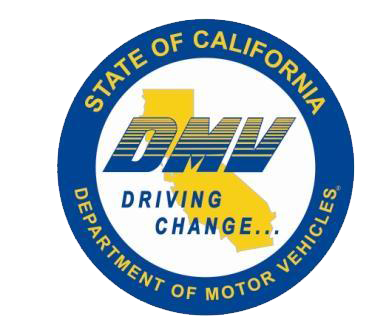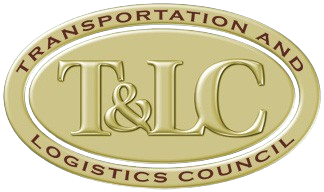Personal Conveyance: Is it Worth it?
There’s nothing quite as amorphous as personal conveyance in FMCSA’s safety regulations.
Personal conveyance (also called PC) describes time spent by regulated drivers operating commercial vehicles for personal use in off-duty status. PC time is not counted against the drivers’ available hours. In essence, it’s a limited exception to the requirement that all time spent at the operating controls of a commercial motor vehicle be logged as driving time on the driver’s records of duty status.
As you might imagine, the idea of logging driving time as off-duty is fraught with the potential for misuse to conceal hours-of-service violations. For example, if a driver has reached his or her 11-hour driving limit but is still 30 miles from the destination, there’s certainly a temptation to flip over to off-duty personal conveyance status to complete the move and avoid a substantive HOS violation. Therein lies the problem.
4 Ways to Know if Personal Conveyance is Being Used Correctly
In the age of electronic logging devices, personal conveyance is one of the few remaining ways unscrupulous carriers and drivers can hide HOS violations. But more often than not, it comes back to bite them in a big way.
Personal conveyance is not a mandatory duty status, meaning the regulations don’t compel carriers and drivers to use it. They can, instead, log all driving time — even if it’s not work-related — as “driving.” The question is whether the benefits of using PC outweighs its potential downfalls. Consider the following points as you work to answer that question.
Personal Conveyance Regulations?
If you’re looking for a regulatory definition of “personal conveyance” amongst the HOS rules in Part 395 of the Federal Motor Carrier Safety Regulations, you’ll be disappointed. The FMCSRs themselves say absolutely nothing about personal conveyance. Instead, you must look to the FMCSA’s informal guidance — which doesn’t carry the force of law but is generally understood as binding on the agency — to understand the concept and its bounds. The agency’s personal conveyance guidance has morphed over time but currently states:
A driver may record time operating a CMV for personal conveyance (i.e., for personal use or reasons) as off-duty only when the driver is relieved from work and all responsibility for performing work by the motor carrier. The CMV may be used for personal conveyance even if it is laden, since the load is not being transported for the commercial benefit of the carrier at that time. Personal conveyance does not reduce a driver’s or motor carrier’s responsibility to operate a CMV safely. Motor carriers can establish personal conveyance limitations either within the scope of, or more restrictive than, this guidance, such as banning use of a CMV for personal conveyance purposes, imposing a distance limitation on personal conveyance, or prohibiting personal conveyance while the CMV is laden.
The guidance makes clear the key to personal conveyance is that the driver must be “relieved from work and all responsibility for performing work by the motor carrier.” Put another way, if a driver is operating a CMV at the direction of a motor carrier (e.g., to have the vehicle serviced) or to enhance the operational readiness of the carrier for the next load (e.g., bobtailing overnight towards the next shipper facility), the driver cannot log the time as off-duty personal conveyance.
The guidance goes on to list specific examples of qualifying and non-qualifying moves. Examples of those that qualify as personal conveyance include traveling from en-route lodging to restaurants or entertainment facilities and moving a commercial vehicle at the request of a safety official during off-duty time. Those that don’t qualify include bobtailing to retrieve a new trailer and driving to have a vehicle serviced.
Unfortunately, the agency’s guidance leaves the concept of personal conveyance open to interpretation in dozens of other common yet unaddressed scenarios. The “grayness” of personal conveyance frequently leads to trouble.
Log Falsification Violations
Log falsification has plagued the industry for decades. In fact, it was the primary driving force behind the ELD mandate. Unfortunately, ELDs haven’t completely eradicated that issue. Carriers and drivers still find ways to sidestep the HOS rules by manipulating their electronic logs, and PC is the common culprit.
According to data from the FMCSA, log falsification is the third most frequent violation discovered during roadside inspections in 2022. And it comes in second on the list of most common violations discovered during FMCSA audits. Certainly not all log falsification violations stem from PC misuse, but in my experience, most do.
So, what does this mean for fleets and their drivers? For one, if a driver is tagged with a log falsification violation during a roadside inspection, that can lead to an out-of-service order, sidelining the driver for at least 10 hours. Further, those violations negatively impact the motor carrier’s hours-of-service CSA score, which can, in turn, lead to enforcement, increased insurance premiums, and lost business. Additionally, log falsification stemming from PC misuse is a frequent contributor to downgraded safety ratings.
There was a mid-size carrier (75 trucks) that had an FMCSA audit that stemmed from the carrier’s relatively high HOS score. The audit was focused only on HOS, and the investigator spent a few days combing through samples of driver logs and supporting documents. Upon concluding his review, the investigator cited the carrier with a “critical level” of log falsifications due to PC misuse.
The investigation revealed several instances of drivers misusing PC to enhance the carrier’s operational readiness by moving closer to their next load in off-duty status. Other instances of PC misuse were less nefarious (e.g., mistaken use of PC to move trucks for maintenance) but nevertheless contributed to the critical violation.
Under FMCSA’s safety rating methodology, a carrier cannot escape an audit in which there is a critical-level violation in the HOS factor with anything better than a conditional safety rating. HOS violations are the only violations the FMCSA double-weights in its audits, which carries significant consequences to carriers’ safety ratings.
This is a cautionary tale, of course. Because of its conditional rating, this carrier lost a few major contracts with brokers and shippers and had to secure new insurance coverage. Alongside serious accidents, nothing can sink a carrier quite as quickly as log falsification violations. And more often than not, those stem from PC misuse.
Placing Restrictions on PC
While the FMCSA’s guidance makes clear that drivers and carriers are free to use personal conveyance in situations that qualify for it, it’s important to note that carriers are not compelled to allow drivers to do so. In other words, it is perfectly acceptable to — and many carriers do — require drivers to log all time operating a commercial vehicle as driving time rather than PC.
Alternatively, it is acceptable for carriers to place limitations on the use of personal conveyance. For example, many carriers have written policies specific to personal conveyance. Some of those policies place a time or distance limitation on personal conveyance use (e.g., no more than 30 minutes or 25 miles of personal conveyance use per day).
There are many reasons a carrier may wish to curb the use of personal conveyance among its drivers, including cutting down on the misuse of the status and the potential regulatory violations that stem from it, as well as minimizing highway accident exposure in situations where a driver is operating beyond the legal hours in PC status. Ultimately, it is up to each carrier whether and to what extent it will allow drivers to use personal conveyance status.
Some carriers and drivers simply don’t need to use PC and can avoid the many headaches it causes by turning it off. This is true of many short-haul operations where drivers are not routinely bumping up against their HOS limits. If drivers aren’t at risk of exceeding their limits, there’s really no downside to treating all their driving time as “driving” and avoiding PC altogether.
That’s certainly a less appealing proposition for owner-operator fleets and those whose operations rely on legitimate PC use to avoid substantive HOS violations. If that’s you, my advice is to keep a close watch on PC use and consider placing limits on its use in a written company policy. The consequences of PC misuse are too severe to place your head in the sand.
Content Disclaimer: Due to the constantly changing nature of government regulations, it is impossible to guarantee the total and absolute accuracy of the material contained herein or presented. NorthAmerican Transportation Association (NTA) cannot and does not assume any responsibility for omissions, errors, misprinting or ambiguity contained. NTA shall not be held liable in any degree for any loss, damage or injury caused by any such omission, error, misprinting or ambiguity present. It is made available with the understanding that NTA is not engaged in rendering legal, accounting or other professional service. If legal advice or other expert service is required, the services of such a professional should be sought.











